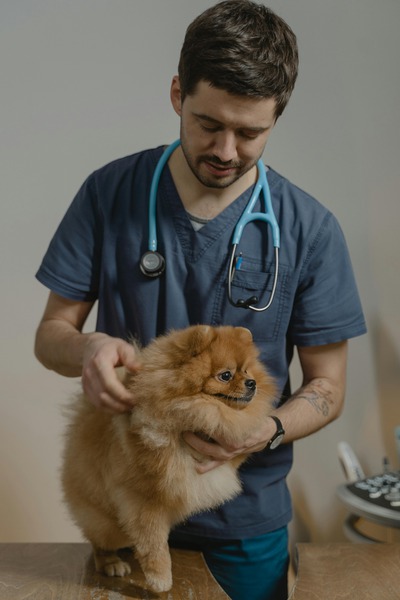Our furry friends can’t tell us when something’s wrong, particularly with something as delicate as their eyes. As responsible pet owners, it’s crucial to recognize the signs and symptoms of common eye problems in pets. From noticing a troubling redness to seeing your pet paw at their eyes, understanding these conditions can be the first step to ensuring our pets get the care they need.
Conjunctivitis
Commonly known as “pink eye,” conjunctivitis is an inflammation of the eye’s conjunctiva. Pets with conjunctivitis may display symptoms such as:
-
Red, puffy eyes
-
A thick, yellow or green discharge
-
Squinting or blinking excessively
This condition may affect both dogs and cats and can be caused by allergies, infections, or even foreign bodies that irritate the eye. Timely treatment from a professional is crucial to avoid further complications. If home remedies fail to improve your pet’s condition, it is often recommended to consult a vet eye specialist in Cape Coral, FL.
Cataracts
As one of the more recognizable eye conditions, cataracts can create a cloudy film over your pet’s eyes, leading to potential vision loss. This condition might be genetic or can develop as a result of diabetes or injury. Pets with cataracts often have:
-
Dulled eye color, appearing grey or white
-
Decreased vision, especially in low light conditions
-
An apparent discomfort in bright environments
While cataracts can be alarming, veterinary advancements allow for treatments that can restore vision. If you notice any signs of early cataracts, it’s best to address them right away.
Glaucoma
Glaucoma in pets is similar to that in humans—it results from increased pressure within the eye. This pressure can damage the optic nerve, leading to vision loss and even blindness if untreated. Your pet might show:
-
Eyeball enlargement or bulging
-
Cloudiness of the front of the eye
-
Excessive tearing or blinking
This condition requires immediate attention to prevent serious consequences. Treatments vary, but monitoring eye pressure is a vital part of managing the disease.
Corneal Ulcers
A corneal ulcer is essentially a scratch on the eye’s surface. They can be quite painful and often result from injuries, such as a cat scratch or getting poked by a branch. Signs that may indicate a corneal ulcer include:
-
Pawing at the eye
-
A visible cloudiness or spot on the cornea
-
Tearfulness and squinting
Since ulcers can worsen rapidly, causing deeper infections and scarring, they need quick evaluation and treatment. In some cases, ulcers may heal with medication, while more serious instances could require veterinary ocular surgery in South Florida, FL.
Dry Eye Syndrome
Technically known as keratoconjunctivitis sicca (KCS), dry eye syndrome occurs when a pet’s eyes don’t produce enough tear film. This can lead to:
-
An itchy, uncomfortable sensation
-
A thick, mucus-like discharge
-
Inflammation or damage to the cornea
Dry eye syndrome requires ongoing treatment to keep your pet comfortable. If untreated, it can lead to severe eye complications. Remember, regular check-ups can catch this condition early on for a better management plan.
Cherry Eye
Named for its appearance, the cherry eye occurs when the tear gland of the third eyelid protrudes, creating a red bulge. It’s seen more often in younger dogs, especially in brachycephalic breeds like bulldogs and Shih Tzus. Cherry eye symptoms include:
-
A red lump protruding from the corner of the eye
-
Rubbing or pawing at the affected eye
-
Discharge or tearing
Surgery is often required to fix the cherry eye and prevent potential complications, like chronic dry eye or constricted vision.
Progressive Retinal Atrophy (PRA)
A genetic condition primarily affecting older dogs, PRA leads to the deterioration of retinal cells, resulting in impaired vision and, eventually blindness. Its early signs might include:
-
Poor night vision
-
A subtle increase in the shine or glow of the eyes
-
An unwillingness to navigate in the dark
PRA is not painful, but it is progressive. No cure exists for PRA, but early diagnosis allows pet owners to adapt their home environment to better suit their pet’s changing vision.
Uveitis
Uveitis is the inflammation of the interior eye structures and can be due to infections, immune-mediated diseases, or trauma. Uveitis can cause:
-
A change in eye color or cloudiness
-
Visible discomfort or pain
-
Iris sticking to the lens or cornea
If you suspect your pet might have uveitis, a veterinary visit is imperative. Managing the underlying cause is often the key to treating uveitis.
Prevention and Early Detection
Taking preventive measures like regular check-ups and keeping your pet’s face and eye area clean are essential steps to maintain their ocular health. Early detection of eye issues significantly improves the outcome, so observing your pet’s behavior and eye appearance is crucial.
Whether it’s scheduling routine eye exams or seeking specialized care, maintaining your pet’s eye health is a commitment that pays off with their well-being and quality of life. You can also click here to get more info on the expertise to support this process.
Wrapping Up
Taking care of our pets means being vigilant about their health, including their eyes. Pets may suffer from a variety of eye conditions, some of which can lead to serious complications if left untreated. Being attentive to your pet’s eye health and consulting with veterinary professionals when concerns arise is fundamental.
Early intervention and treatment can preserve your furry companion’s vision, ensuring they lead a comfortable and happy life. By understanding the common eye problems that can affect our pets, we take an essential step towards providing them with the best care possible.

